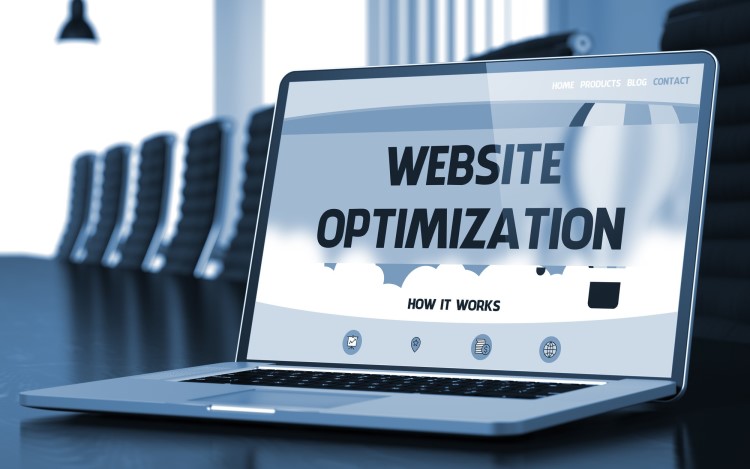Understanding how to optimize a business website is essential for attracting customers, improving user experience, and increasing conversions. A well-optimized website not only drives traffic but also ensures that visitors stay engaged and are more likely to become loyal customers. By focusing on website performance, SEO, design, and usability, businesses can significantly improve their online presence and achieve their goals. Optimizing a business website is not a one-time task but a continuous process that evolves with changing trends, technology, and user expectations.
Improving Website Speed and Performance
One of the first steps in learning how to optimize a business website is improving site speed and performance. Website loading time plays a crucial role in user experience and can directly impact bounce rates. Research shows that users are more likely to leave a website if it takes more than three seconds to load. This means that businesses must ensure their websites load quickly, especially on mobile devices. Compressing images, reducing redirects, and leveraging browser caching are some effective ways to speed up a website. Additionally, investing in a reliable web hosting service ensures that the website can handle large amounts of traffic without slowing down.
Another critical aspect of website performance is mobile responsiveness. With more users accessing websites from their mobile devices, it is essential to optimize for smaller screens. A responsive website design adjusts seamlessly to different screen sizes, providing users with an optimal experience regardless of the device they use. Google’s search algorithm prioritizes mobile-friendly websites, making mobile optimization essential for better search engine rankings.
Optimizing for Search Engines (SEO)
Search engine optimization (SEO) is a fundamental component of how to optimize a business website. SEO involves optimizing various elements of a website to improve its visibility in search engine results pages (SERPs). Higher visibility means more organic traffic, which can translate into higher conversions. To optimize a website for SEO, businesses need to focus on keyword research, on-page SEO, and technical SEO.
Keyword research helps identify the phrases and terms that potential customers are using to search for products or services. By incorporating these keywords strategically into page titles, meta descriptions, headers, and content, businesses can improve their ranking on search engines like Google. However, it is essential to avoid keyword stuffing, as search engines penalize websites for overusing keywords. The goal is to provide value to users with relevant, informative content that naturally incorporates important keywords.
Technical SEO refers to optimizing the backend elements of a website that affect search engine indexing and crawling. This includes improving site architecture, creating a clear URL structure, and using schema markup to help search engines understand the content better. A well-organized website with clean coding makes it easier for search engines to crawl and index the pages, which can result in better rankings. Businesses should also ensure that their websites are secure by using HTTPS, as Google considers security an important ranking factor.
Enhancing User Experience (UX)
A crucial part of how to optimize a business website is focusing on the overall user experience (UX). A positive user experience keeps visitors on the site longer and increases the likelihood of conversions. To enhance UX, businesses must prioritize intuitive navigation, clear calls to action (CTAs), and accessible design elements.
Clear navigation is key to helping users find the information they need quickly and easily. A well-structured menu, search functionality, and internal linking system allow visitors to move through the site without frustration. A cluttered or confusing navigation system can cause users to leave the site without engaging further, leading to higher bounce rates. Ensuring that important pages, such as contact information or service details, are easy to locate improves user satisfaction.
Another important aspect of UX is incorporating strong CTAs throughout the website. Whether encouraging visitors to make a purchase, subscribe to a newsletter, or request a consultation, CTAs must be clear, concise, and actionable. Buttons should stand out visually and guide the user through the intended action.
Accessibility is also an important part of a good user experience. Websites should be designed to accommodate users with disabilities by following best practices such as providing alt text for images, using descriptive link text, and ensuring that the website is navigable with a keyboard. By making websites more accessible, businesses can reach a broader audience and provide a better experience for all users.
Optimizing Content for Engagement
Content optimization is another critical factor in how to optimize a business website. High-quality content keeps visitors engaged and encourages them to explore the site further. Content should be relevant, informative, and tailored to the target audience’s needs. Businesses should focus on creating a content strategy that includes blog posts, articles, videos, and case studies that provide value to the audience.
Regularly updating the content on the website is important for SEO and for keeping users interested. Fresh content signals to search engines that the site is active, which can improve rankings. Additionally, providing valuable and shareable content can increase backlinks, further enhancing the website’s authority and ranking on search engines.
To optimize content, it’s important to consider both the structure and readability of the text. Breaking content into small paragraphs, using subheadings, and incorporating bullet points when necessary make the text more scannable and easy to read. Including relevant keywords without overstuffing them ensures that the content ranks well in search engines while maintaining readability for the user.
Tracking and Analyzing Performance
Once optimized, tracking a website’s performance and adjusting strategies is crucial. Tools like Google Analytics and Google Search Console offer insights into traffic, user behavior, and rankings. Regularly reviewing metrics like bounce rate, time on site, and conversions helps businesses identify areas for improvement.
Tracking keyword rankings and monitoring SEO efforts ensure that the website maintains good search rankings. Watching competitors’ sites reveals opportunities for improvement. Continuous optimization keeps a strong online presence and ensures competitiveness.
Optimizing a business website attracts customers, improves user experience, and increases conversions. Focusing on speed, SEO, and content helps achieve these goals.


